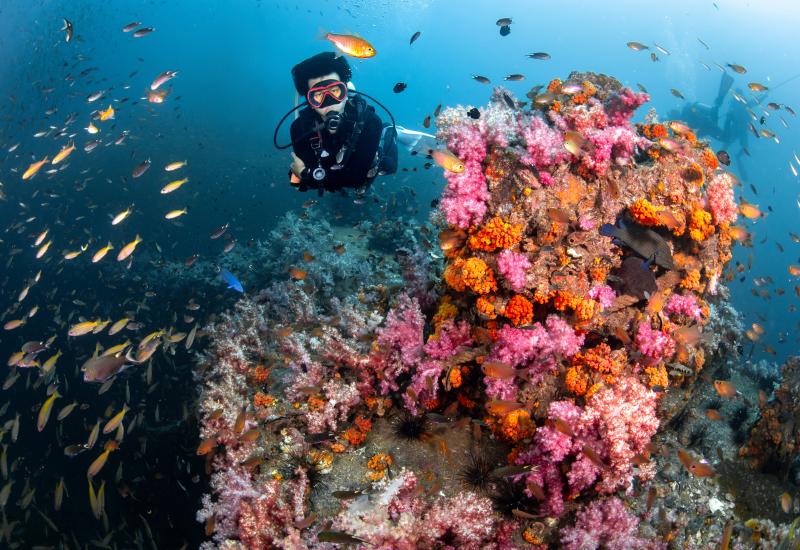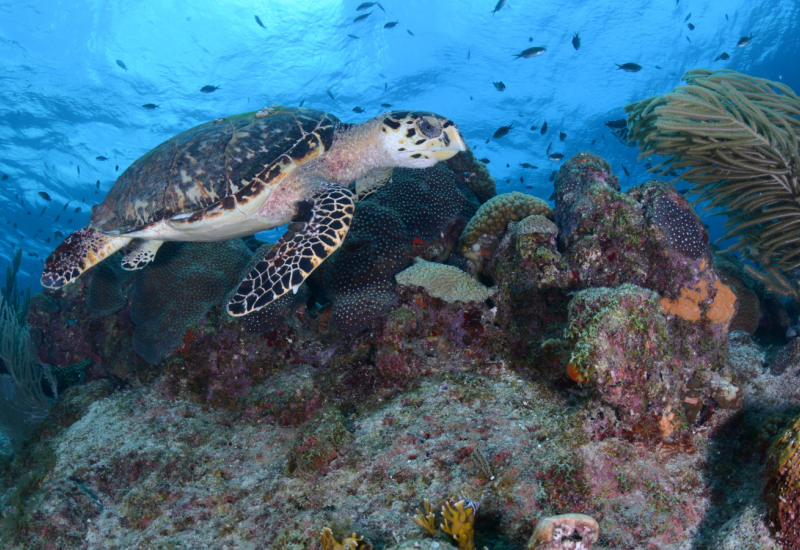Diving Malta's Wartime Shipwreck Graveyard Will Leave You In Awe

Steve JonesIn the heat of World War II battle, the destroyer HMS Southwold was ripped in half by a mine explosion.
During World War II, Malta became one of the most bombed locations in history. Here's what was left behind.
Still-loaded torpedoes on S-boats capable of screaming speeds, hulking ocean liners conscripted for war, and the daring exploits of cheeky destroyers — each wreck in the underwater panoply of battered but unbowed Malta has a riveting story to tell.
BATTLE STATIONS
A stream of water trails behind the bright orange buoy that marks our descent line: There will be current. We jump far upstream, yet any haste is made impossible by the 200 pounds of gear I’m carrying, and the buoy rushes past before I can grab it. Without wasting another second, I squeeze the trigger and my Suex Diver Propulsion Vehicle surges to life, powering me back to the line. A long hand-over-hand descent begins as the danger of overexertion lingers in my mind.
Minutes later, we touch down on the seabed at 215 feet; before me, I see only a trail in the white sand where a massive shot-line weight has been dragged. There is no sign of the wreck. We attach a cave line to the rope and power up the DPVs, following the rut in the sand. Soon a colossal shadow reveals the SS Le Polynesien, one of Malta’s most spectacular wrecks.
Le Polynesien was a 6,373-ton French liner sunk by U-boat UC-22 on August 10, 1918, during the closing stages of World War I, killing 10. It was carrying Serbian troops at the time. Some 7 miles from Malta’s capital, Valletta, this large wreck lies on its port side with an intact hull.
We’ve arrived on the wreck amidships and scooter toward the bow, viewing its spectacular superstructure on the way. A solitary gun stands upright among deck machinery, encrusted in marine growth. We loop around and head back toward the stern, where open holds and shafts beckon on this 498-foot ship. In what seems like no time, we’ve reached our limit — even with 50 minutes at depth, we’ve explored only a fraction of the wreck. We head back to the line on which we’ll make our long decompression stops, drawing to a close a dive that has truly earned the description “epic.”
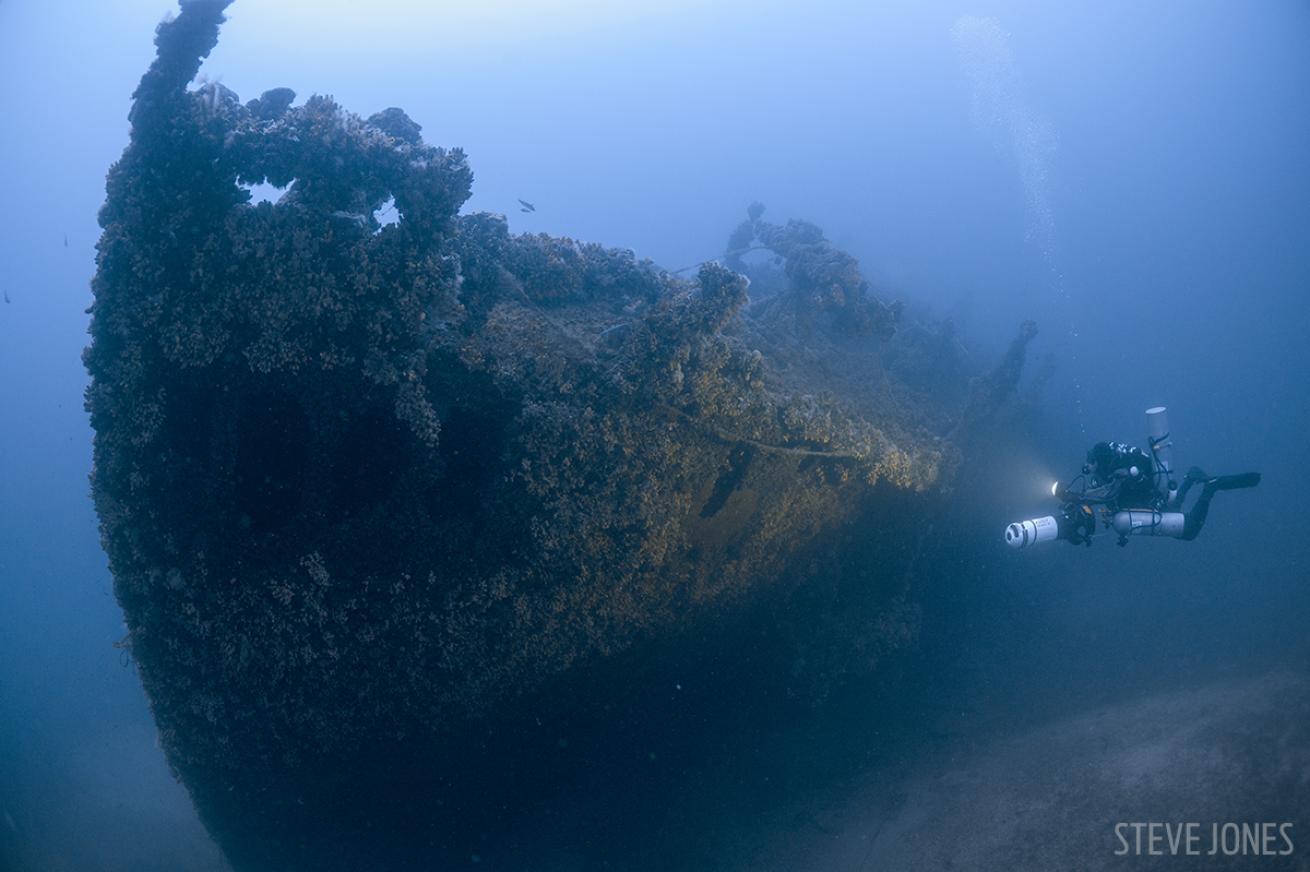
Steve JonesOne of Malta’s most spectacular wrecks, Le Polynesien was a 6,373-ton French liner sunk by U-boat UC-22 on August 10, 1918, during the closing stages of World War I, killing 10.
AN ISLAND UNDER SEIGE
During World War II, Malta became one of the most bombed locations in history.
Its position allowed the British Royal Navy and RAF to disrupt supply lines of Axis armies cutting their way through North Africa. Initial attacks from Italy were met with resistance, but the Italians were soon reinforced with highly capable German forces with a clear agenda: Neutralize Malta once and for all.
As the siege intensified, the population starved. Short of ammunition and fuel, outnumbered Allied fighters took on hordes of enemy aircraft in a ferocious and unrelenting air war.
The key to Malta’s survival lay in getting supplies through; convoys were the lifeline. British and U.S. aircraft carriers made dangerous passages through the Axis-dominated Mediterranean to get within range to fly fighters onto the island. Cargo ships carrying food, fuel and ammunition were under constant attack that continued even after they made it to the harbor.
Much of the legacy of the battle for Malta now lies in the clear blue waters that surround this island.
In March 1942, with the siege at a peak, convoy MW10 steamed toward Malta. It was spotted by an Italian battleship; rather than retreat, the vastly outgunned escorts attacked and, despite taking heavy damage, prevented the cargo from being intercepted.
As a consequence, however, the convoy’s arrival was delayed until daylight hours, exposing it to air attack. HMS Breconshire was hit, and while the destroyer HMS Southwold attempted to tow the stricken tanker away from a British minefield, a mine exploded, killing five. Southwold’s hull then split in two while it was under tow.
The two halves of the Southwold today make two separate dives nearly 1,000 feet apart. The bow lies on its starboard side in 225 feet of water; we start our exploration near the area where the ship was torn in two, a scene of complete devastation. We scooter ahead, passing the top of the recognizable bridge. The whole forward area of the ship is intact, with the main guns pointing straight toward the bow.
A few days later we venture to the stern, which, at 235 feet, lies slightly deeper and is upright. Aside from the damage at the break, it’s in very good condition; our first sight is the rear guns, still angled upward ready to fire, reminding us that this ship was at battle stations when it went down. Neatly arranged depth charges can be seen in their racks — amazingly, even the nameplate of the ship is still there.
Dropping over the stern to the seabed, I arrive at the huge propellers, still attached, before our time constraints at this depth draw our visit to a close.

Steve JonesThe S-boats were built for speed, constructed of a mahogany outer hull and light metal frame, but the wood has long since rotted away, giving this one its dragon-like appearance.
DRAGON OR DINOSAUR
During the massive renewed assault on Malta in 1942, the country’s fate hung in the balance. The surrender date — that day when fuel, food or ammunition would run out — was at times only weeks away. But as increasing numbers of deadly Spitfire fighters made it through, the air battle swung in favor of the defenders. As Axis aircraft losses increased, they concentrated their efforts on stopping the convoys.
HMS Welshman was targeted by the Axis due to its success on supply runs to Malta. In May 1942, a flotilla of seven Schnellboots — fast torpedo boats — set off to sink the Welshman. While laying a minefield, the S-31 Schnellboot exploded, probably after detonating one of its own mines. Half of the crew of 26 lost their lives.
A current-free descent reveals a wreck like no other I’ve seen, more like a dinosaur skeleton than a torpedo boat. The S-boats were built for speed, constructed of a mahogany outer hull and light metal frame, but the wood has long since rotted away, giving this one its distinctive appearance. It’s small — 115 feet — but at 215 feet of depth and plenty to see, there’s no time to waste.
Swimming down from the bow, we soon come across the huge portside torpedo tube, where an open door reveals a loaded torpedo. S-boats each had two of these 21-inch-diameter torpedo tubes, packing a mighty punch.
Slightly aft of the torpedo tubes, we come to the scene of that catastrophic explosion. Ammunition cases lie scattered among numerous artifacts; we swim past barrels that are either oil drums or depth charges before coming to the engines. This craft had not one but three huge Daimlers, which provided 3,960 bhp to a ship that weighed only 102 tons, propelling it up to 38 knots.
My buddy places my high-powered light inside the hull, making the wreck resemble a dragon’s head, breathing fire one last time.
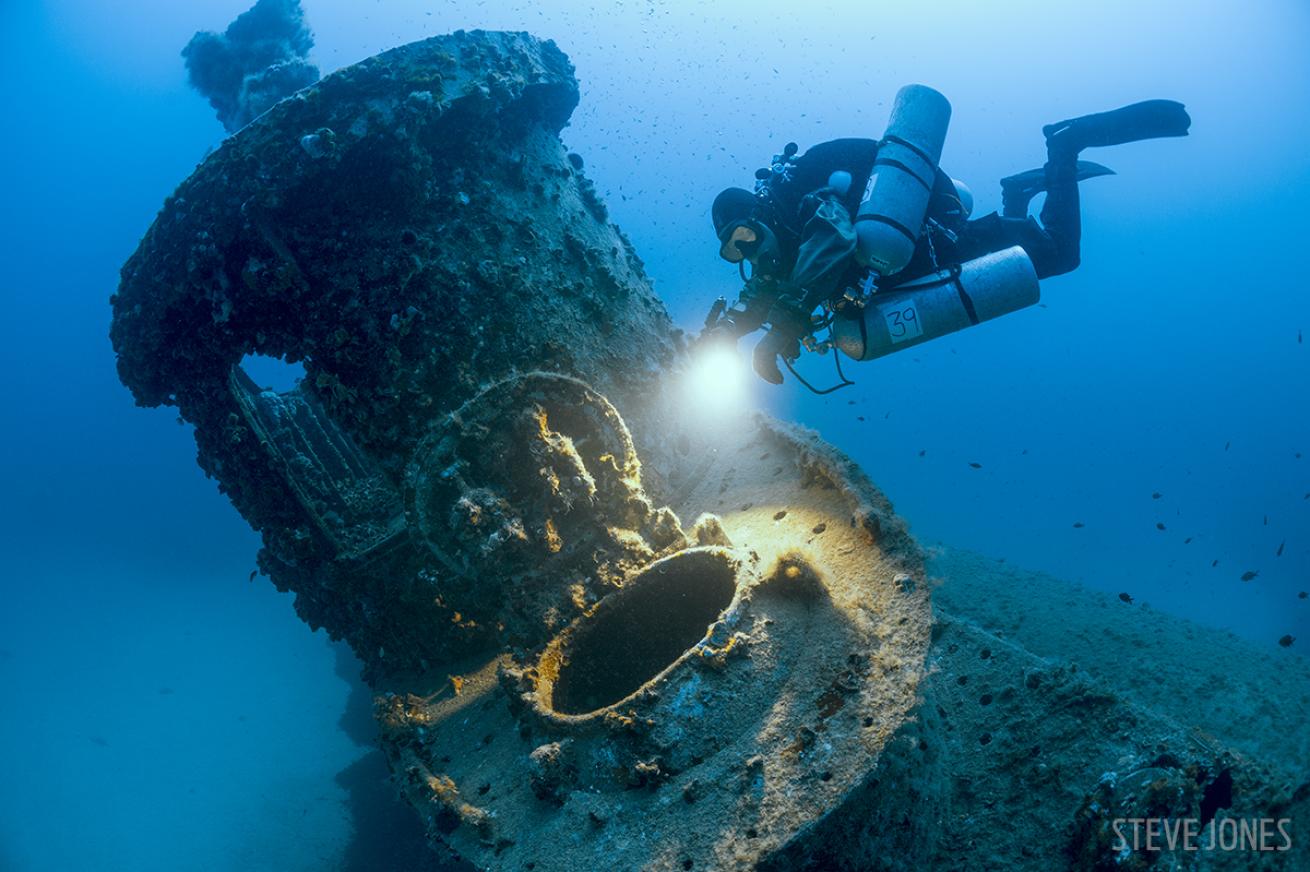
Steve JonesThe British S-class submarine HMS Stubborn was true to its name: Despite being severely damaged during a brutal attack in 1944, the ship did not sink until two years later.
AGAINST ALL ODDS
The statistics say it all — 52 U.S., 79 British and a staggering 784 German submarines were lost in WWII, with little chance of any crew surviving a sinking.
It’s a somber thought as we descend onto HMS Stubborn, a British S-class submarine, scuttled after the war. In the crystal-clear water, we can see the deck stretch away to the bow — it’s easy to imagine the view the captain once had. Swimming forward along that deck, we come to the hydroplanes, which control a submarine’s pitch, or angle of the dive, in the water.
In 1944, problems with the rear hydroplanes nearly brought about the end of this ship. Following an unsuccessful attack on a German convoy in Norway, its escorts retaliated with 36 depth charges, jamming Stubborn’s rear hydroplanes and sending it more than 390 feet down. It resurfaced twice, still under attack, before a third uncontrolled dive sent it beyond 490 feet, 190 feet past its maximum depth. It bounced off the seabed four times as 16 more depth charges exploded nearby.
The attackers broke off, and the crew just managed to get the sub back to the surface, heavily damaged. As it made for home, its rudder disconnected, but Stubborn was true to its name and made it back. Now, 72 years later, we drop to the seabed at 180 feet, and the sleek, knife-edge bow comes into view, along with the forward torpedo tubes, three on each side, giving the wreck an aura of menace. It lies nearly upright with a slight list to starboard, which allows sunlight to bathe the port side, illuminating this well-preserved wreck.
Stubborn’s career ended in Malta, scuttled as an anti-submarine-warfare target in 1946. Though the royal navy knew its location, it wasn’t until 1994 that it became known to divers. Malta’s siege ended in November 1942, as enemy air forces were diverted to support the North Africa campaign. If Malta had fallen, the Allies would have faced a much stronger, well-supplied opponent — these waters preserve the legacy of their little-known yet pivotal battle. The Maltese and their defenders stood against overwhelming odds at a time when all hope seemed lost. In 1942, Malta was awarded the George Cross by the United Kingdom, its highest civilian award for bravery — the only time the award has been given to an entire country.
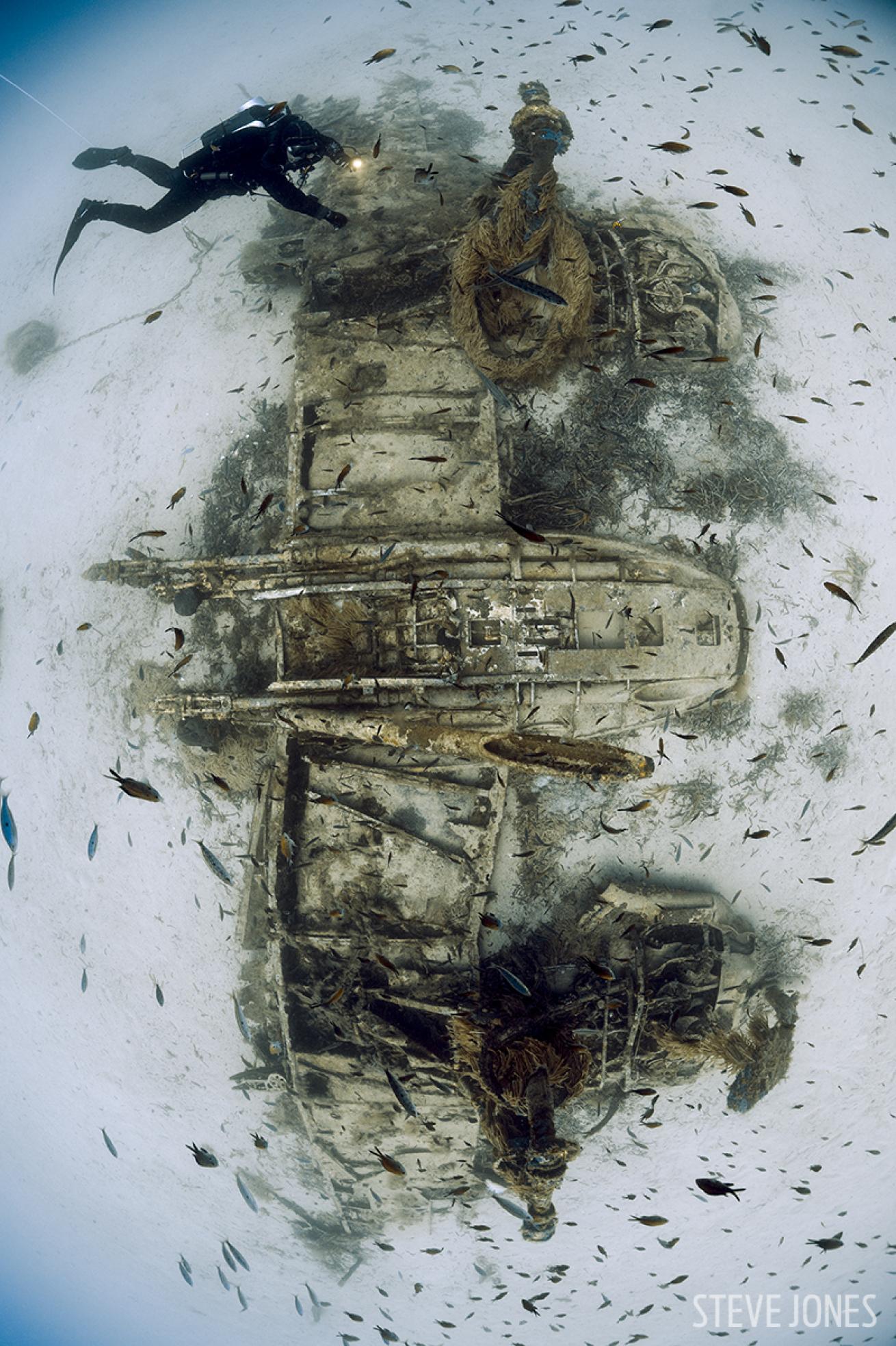
Steve JonesTo get these photos, Steve Jones used a Seacam housing and Nikon D4 with Nikon RS 13mm lens converted by Seacam. His model used the Orcalight; at 30,000 lumens, it’s among the most powerful battery-operated dive lights in the world.
Need more wreck photos? Then check out 10 of the world's most amazing wreck dives.
TIPS FOR PHOTOGRAPHING THE WRECKS IN MALTA
Not going to Malta anytime soon? We've got tons of underwater photo and editing tutorials for any dive destination.
1 Go Wide
These spectacular wrecks lie in clear water, so a fisheye lens such as the Nikkor 16mm or Canon 15mm is ideal.
2 Use Models
Big wrecks need divers in the shots to give them scale. Coach your buddy before descent.
3 Balance Your Lighting
Strobe light has a range of only 10 feet, so wrecks are too big to illuminate fully with artificial light. Ensure you balance your lighting so the rest of the wreck is lit with natural light and not underexposed. Not sure how? Follow our tutorial for positioning strobes.
4 Higher ISOs
When balancing natural light at these depths, a higher ISO setting will ensure the sensor is receptive to the lower levels of ambient light.
5 Make A Plan
Time at depth is limited, so do your research beforehand and work out what you want to shoot.
WHAT YOU NEED TO KNOW TO DIVE MALTA
When to Go
Malta is divable year-round, with the weather more stable in the summer months.
Dive Conditions
Surface water temps climb to above 70 degrees in summer but remain cooler below the thermocline. Drysuits are essential on technical dives, and you can see some awesome drysuit options on our Gear page.
Getting There
Air Malta caters to divers, with very reasonable excess-baggage fees.
Dive Operator
DiveWise and TechWise both offer diving in Malta.
Price Tag
Four-dive packages start at $165, and TechWise offers packages for up to 10 dives. Gas and boat fees are added based on dive sites.
What It Takes
The wrecks of Malta lie at depths up to 235 feet, so advanced trimix certifications are needed. Divers must hold suitable recognized certifications. The best way to dive these wrecks is with technical dive centers, such as TechWise, which offer full support and training.

